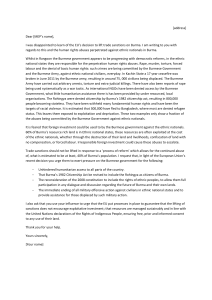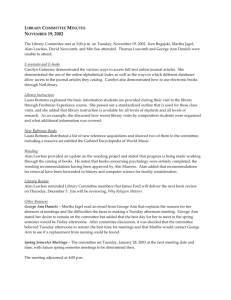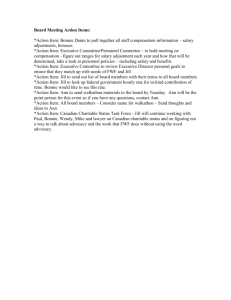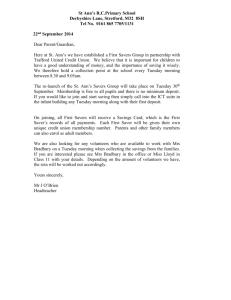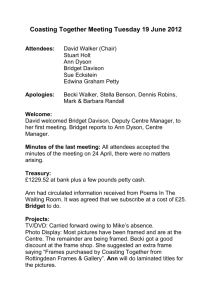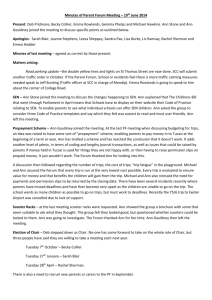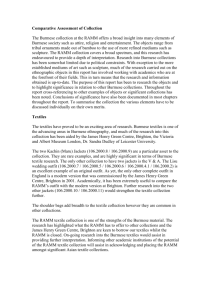1789 – 1826 Ann Hasseltine Judson
advertisement
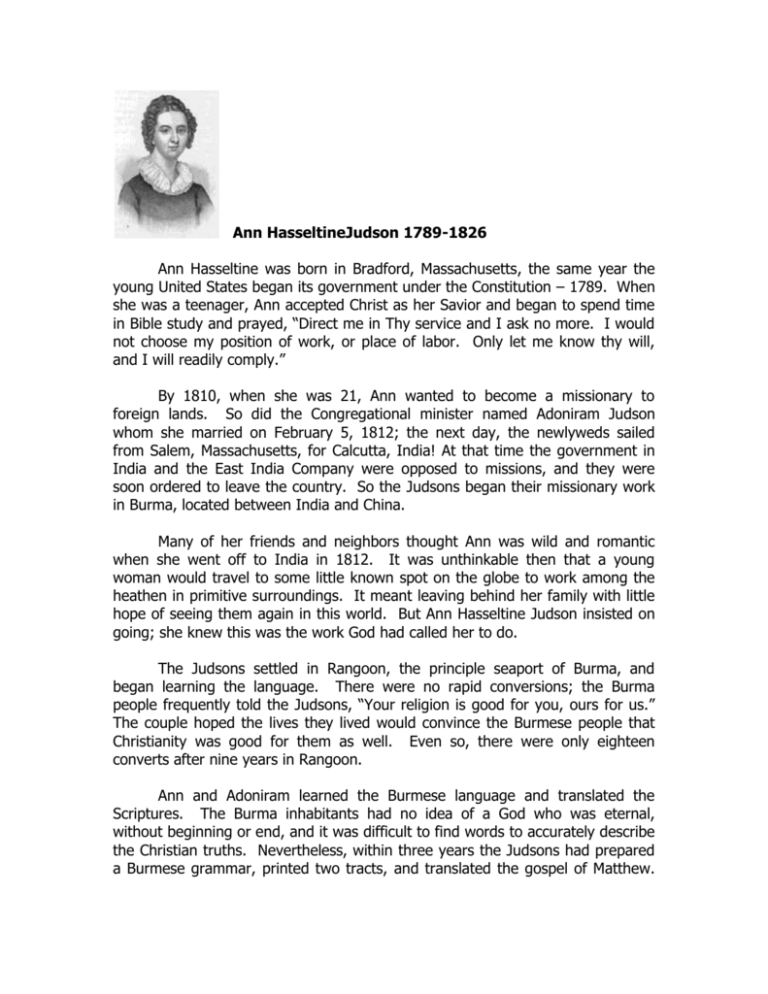
Ann HasseltineJudson 1789-1826 Ann Hasseltine was born in Bradford, Massachusetts, the same year the young United States began its government under the Constitution – 1789. When she was a teenager, Ann accepted Christ as her Savior and began to spend time in Bible study and prayed, “Direct me in Thy service and I ask no more. I would not choose my position of work, or place of labor. Only let me know thy will, and I will readily comply.” By 1810, when she was 21, Ann wanted to become a missionary to foreign lands. So did the Congregational minister named Adoniram Judson whom she married on February 5, 1812; the next day, the newlyweds sailed from Salem, Massachusetts, for Calcutta, India! At that time the government in India and the East India Company were opposed to missions, and they were soon ordered to leave the country. So the Judsons began their missionary work in Burma, located between India and China. Many of her friends and neighbors thought Ann was wild and romantic when she went off to India in 1812. It was unthinkable then that a young woman would travel to some little known spot on the globe to work among the heathen in primitive surroundings. It meant leaving behind her family with little hope of seeing them again in this world. But Ann Hasseltine Judson insisted on going; she knew this was the work God had called her to do. The Judsons settled in Rangoon, the principle seaport of Burma, and began learning the language. There were no rapid conversions; the Burma people frequently told the Judsons, “Your religion is good for you, ours for us.” The couple hoped the lives they lived would convince the Burmese people that Christianity was good for them as well. Even so, there were only eighteen converts after nine years in Rangoon. Ann and Adoniram learned the Burmese language and translated the Scriptures. The Burma inhabitants had no idea of a God who was eternal, without beginning or end, and it was difficult to find words to accurately describe the Christian truths. Nevertheless, within three years the Judsons had prepared a Burmese grammar, printed two tracts, and translated the gospel of Matthew. Ann had formed a society of native women who met together on Sundays to pray and read the Scriptures. War broke out between the British and the Burmese in 1824. The Burmese thought the American Judsons were British, and Adoniram was thrown into death prison. Ann, two months pregnant, was secretly able to bring supplies and food to Adoniram and his fellow prisoners. Shortly after their daughter was born, Adoniram caught a tropical fever. He was moved to another prison. Ann and her three-month daughter followed him to Oung-pen-le. In ministering to her husband, she became ill from both smallpox and spotted fever. Ann later wrote her brother: “The acme of my distress consisted in awful uncertainty of our final fate . . . But the consolations of (my faith), in those trying circumstances, were neither few nor small! It taught me to look beyond this world, to that rest . . . where Jesus reigns and oppression never enters.” When Burma and the British made peace (1926), Adoniram was released and united with his wife and infant daughter. Ann, however, was still weak. She died of a fever on October 24, 1826. Her daughter died within six months. Ann Hasseltine Judson was the first woman missionary to leave America; her story of constant love for Christ encouraged many other women to serve Christ on the mission field. In spite of his suffering at the hands of the Burmese, Adoniram stayed in Burma to bring the gospel of Christ to the people. After twenty-four years he completed a translation of the entire Bible into Burmese. By the time of his death in 1850, Burma had sixty-three churches with 163 missionaries and native church leaders.
